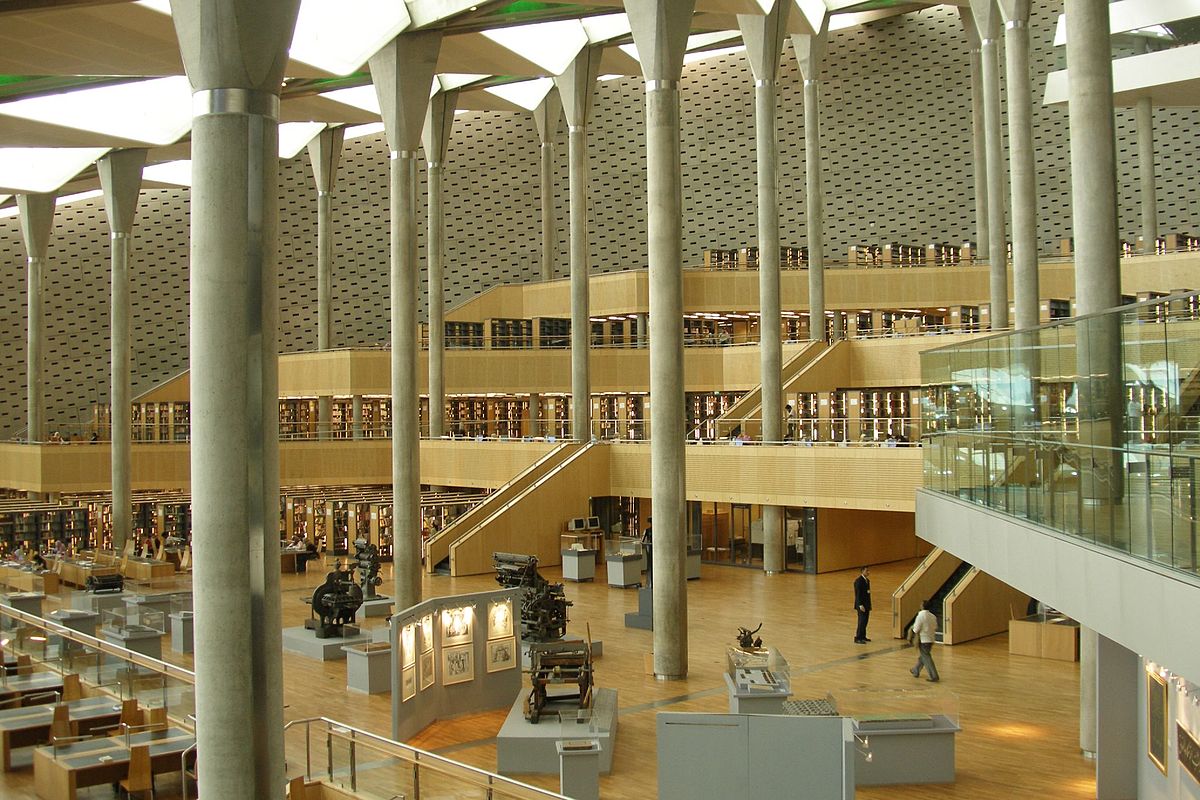The ultimate symbol of lost knowledge, it was destroyed in a series of events that still fuel debate. Between wars, religious persecution and myths, it remains a mystery and the best example of the fragility of human knowledge.
Founded under the Ptolemaic dynasty, the Library of Alexandria was a centre for research and a repository of masterpieces of ancient knowledge.
The Library of Alexandria symbolises humanity’s ambition to preserve and expand knowledge. Its disappearance represents one of the greatest intellectual losses in history and, at the same time, an enigma that has fuelled debate and fascination for centuries.
Although theories abound about its destruction and the numerous actors involved, none has managed to offer a conclusive explanation. The study of its demise faces a scarcity of direct sources and overlapping legends, making the case a historical mystery.
Foundation and splendour of the Library
Established in the city of Alexandria under the Ptolemaic dynasty, the library was inspired by the Hellenistic vision of Ptolemy I Soter, who ascended the throne in 323 BC. Thanks to the impetus of his advisor Demetrius of Phalerum, it was built in the Mouseion. This institution was conceived both as a repository for masterpieces of knowledge and as an active centre for research and teaching.
During the reign of Ptolemy II Philadelphus (284-246 BC), the library enjoyed extraordinary resources. Official emissaries travelled tirelessly throughout the known world to collect works by authors such as Aristotle and texts from Syria, Persia and India.
The architecture was impressive, but what was most remarkable was the daily coexistence of philosophers, scientists and writers, who turned the library and the Mouseion into a true beacon of ancient knowledge.
The founding of the Serapeum—its sister institution, initially intended to house part of the collection—extended its prestige. However, succession disputes led Ptolemy VIII to expel foreign scholars around 145 BC, marking the beginning of its decline.
The Library of Alexandria symbolises the fragility of human knowledge and the loss of an essential part of collective memory.
First blows and decline
The first episode of significant destruction dates back to 48 BC, during the Roman civil war. Julius Caesar, an ally of Cleopatra, set fire to ships and docks in Alexandria to prevent the enemy from fleeing. The fire reached the Mouseion and destroyed part of the library. Plutarch claims that the entire collection was lost, while Seneca the Younger mentions the destruction of 40,000 scrolls. However, there are records indicating that the institution continued to function, albeit in a reduced form.
Under Roman rule, the site fell into disrepair. Librarian and curator Sebastian Modrow argues that the library ‘slowly disappeared due to neglect.’ Even so, there is evidence that the Serapeum survived for a while longer before also being razed to the ground.
Christianity, persecution and new fires
In the 4th century, the spread of Christianity completely altered the intellectual climate of Alexandria. Under the rule of Theodosius I and the authority of the local Christian patriarch, the persecution of paganism intensified. Places dedicated to traditional cults and pagan knowledge became targets of violence.
The Serapeum, a refuge for scholars and a repository of texts, was at the centre of these tensions. A group of scholars actively confronted the Christian offensive and attacked some believers, prompting a severe response: Christian forces stormed the Serapeum, destroyed its structure and razed numerous manuscripts. Contemporary chronicles consider this event to be one of the hardest blows to the city’s written memory.
The growing Christianisation of Alexandria not only meant the disappearance of traditions and rites, but also the last links with classical thought. Thus, religiously motivated fires and looting sealed one of the most tragic chapters in the intellectual history of humanity.
The theory of Arab destruction lacks historical evidence and has been refuted by experts and contemporary sources.
The myth of Arab destruction
For centuries, the version that the disappearance of the library was due to the Arab conquest of Egypt in the 7th century was widespread. According to 13th-century texts, Caliph Umar ordered the books to be burned, as only the Koran was necessary. This story, promoted by Christian chroniclers, claims that the volumes were used as fuel for public baths for six months.
National Geographic and authorities such as Asma Afsaruddin have refuted the veracity of this version, pointing to the intellectual openness of medieval Islamic civilisation. There are no contemporary Arab sources or direct evidence to support it. Everything indicates that the library no longer existed when the Muslims arrived, after centuries of decline and episodes of violence.

An enigma that defies time
The debate over the disappearance of the Library of Alexandria remains open and fuels the curiosity of generations. ‘This is a mystery with several suspects,’ said Roger S. Bagnall. Different currents blame Christianity or Arab rule, even though the evidence points to a gradual disappearance, marked by neglect, violence and myths.
With the dilution of references to the Mouseion and the library, the feeling that an essential part of human memory has been lost forever is reinforced.
The Library of Alexandria continues to arouse nostalgia for lost knowledge and raises, generation after generation, the same question: how many secrets and fundamental discoveries have been condemned to oblivion after its multiple destructions?




